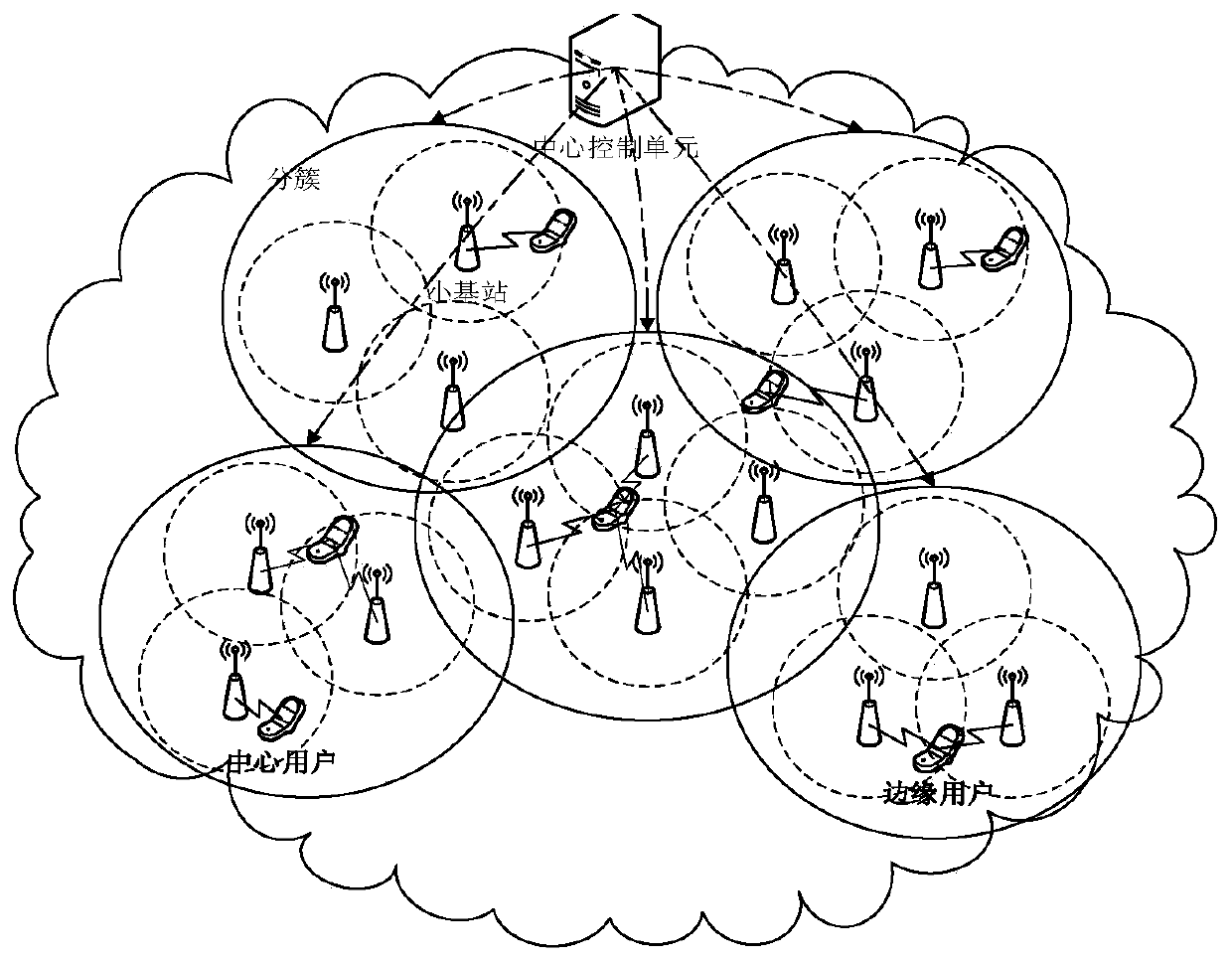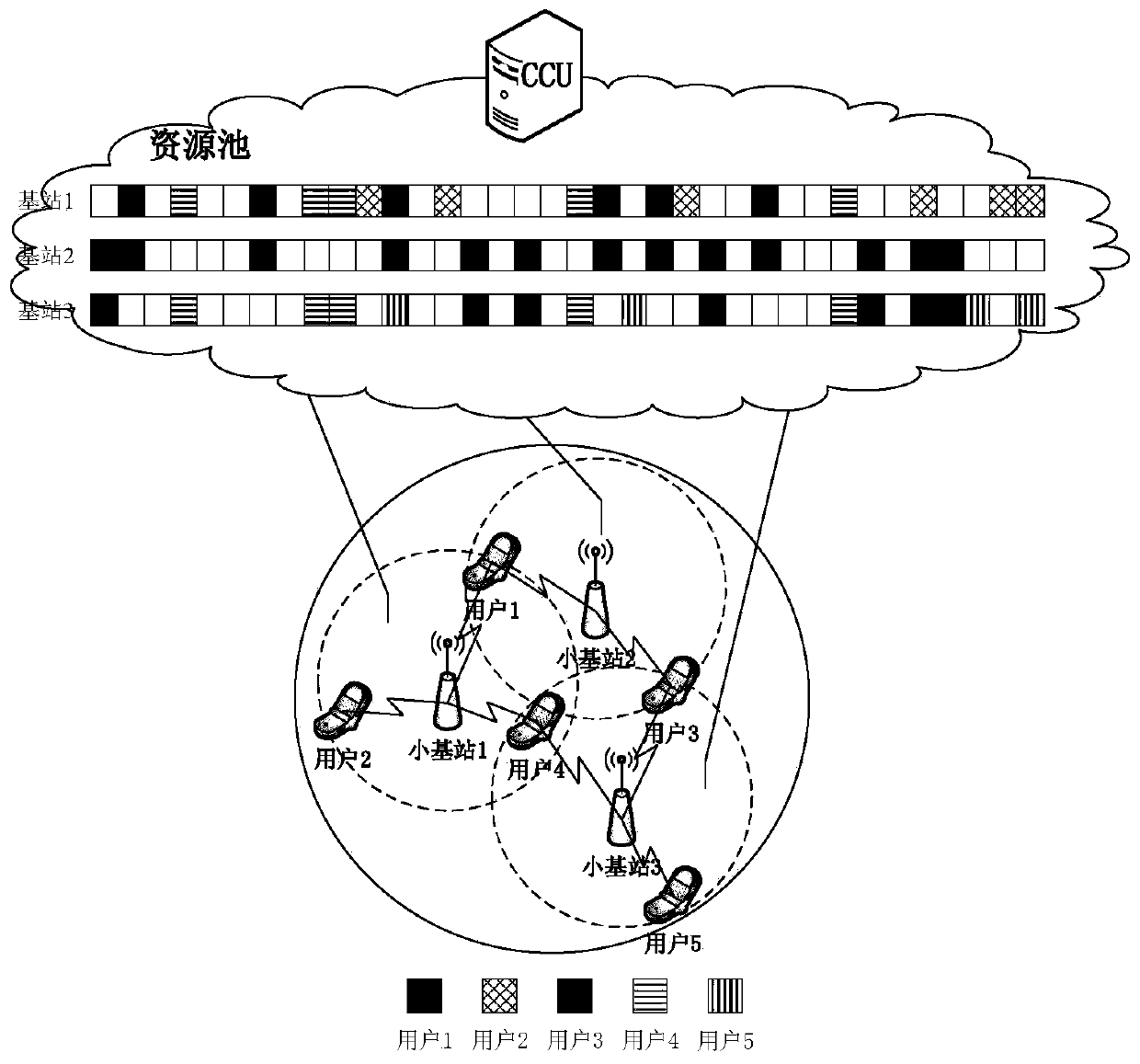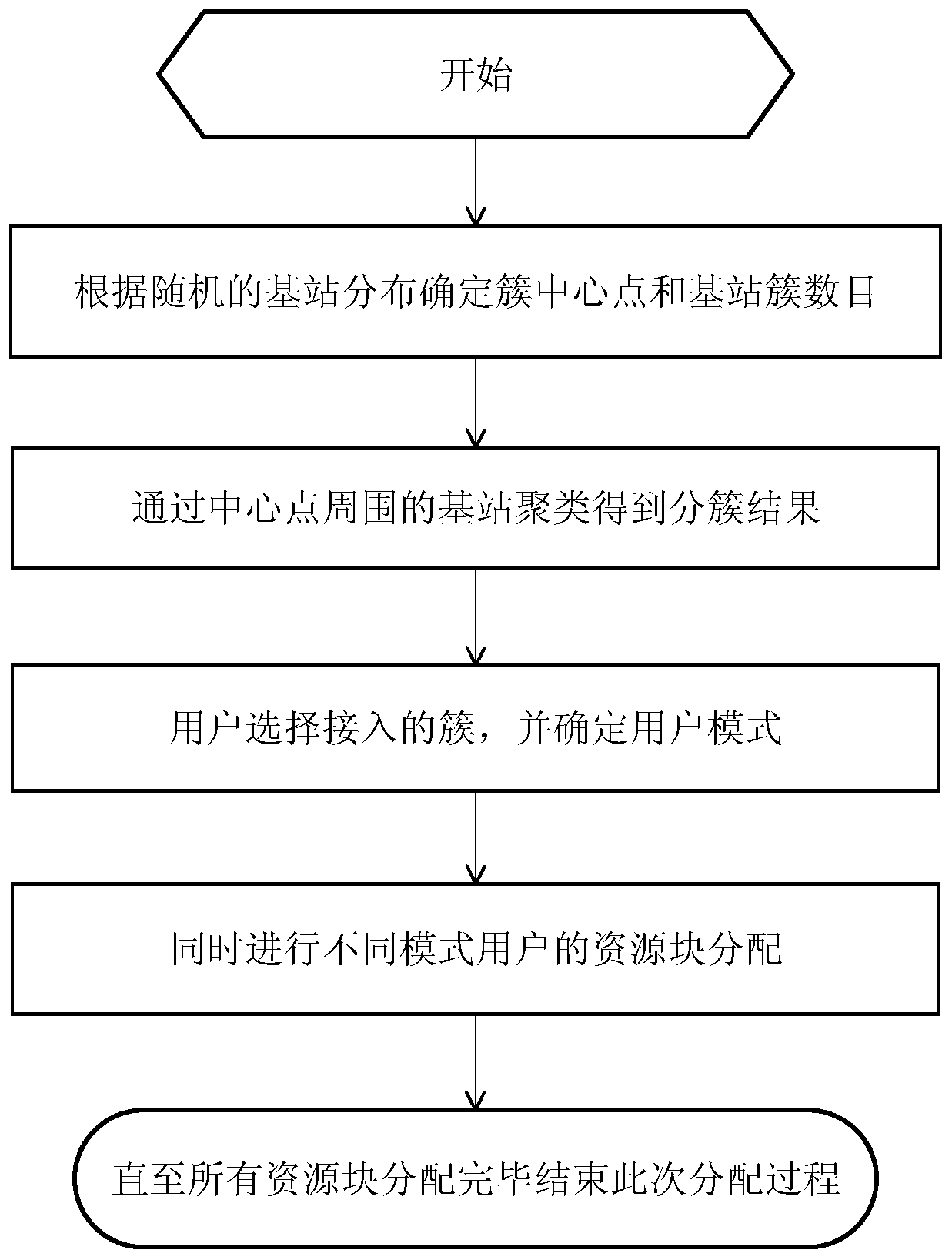Wireless resource allocation method for ultra-dense network based on dynamic clustering
An ultra-dense network and wireless resource technology, applied in the field of base station clustering and resource allocation in wireless communication systems, can solve problems such as poor scalability and insufficient dynamics
- Summary
- Abstract
- Description
- Claims
- Application Information
AI Technical Summary
Problems solved by technology
Method used
Image
Examples
Embodiment Construction
[0035] Below in conjunction with accompanying drawing, technical scheme of the present invention is described in further detail:
[0036] figure 1 It is a system framework diagram of the ultra-dense network scene used by the method proposed by the present invention. The scene of the present invention is described in detail: what is described in the figure is an ultra-dense LTE microcellular network, F low-power small base stations are deployed in the network, the set of all small stations is denoted as S, and its spatial distribution model is in a two-dimensional plane with density λ S The independent homogeneous Poisson point process (Homogeneous Poisson Point Process, HPPP). All small base stations share wireless resources of the same frequency band. Set the set of all small base stations as S, in order to reduce interference, divide the small base stations in the network into L clusters, set C={C 1 ,...,C j ,...,C L} represents the set of all clusters, and The total...
PUM
 Login to View More
Login to View More Abstract
Description
Claims
Application Information
 Login to View More
Login to View More - R&D
- Intellectual Property
- Life Sciences
- Materials
- Tech Scout
- Unparalleled Data Quality
- Higher Quality Content
- 60% Fewer Hallucinations
Browse by: Latest US Patents, China's latest patents, Technical Efficacy Thesaurus, Application Domain, Technology Topic, Popular Technical Reports.
© 2025 PatSnap. All rights reserved.Legal|Privacy policy|Modern Slavery Act Transparency Statement|Sitemap|About US| Contact US: help@patsnap.com



